Roy Tuscany was a good skier, good enough to feature in early Level 1 and Meathead films, but as a person, he’s one of the very best. The founder and CEO of the High Fives Foundation looks back on his early life, ski career, the accident that changed his own life and the foundation that has changed hundreds more. Mine included. I spoke to Roy while he was on the way to a Renown Rehabilitation Hospital to discuss a new peer mentor program. The man never stops, but he told his story while was on his way…

Roy was born in 1981, in Burlington Vermont. He was in 3rd grade when he first skied. His mom told him he had to get a winter sport and he wasn’t too good at basketball! So he started an after-school ski program, at Bolton Valley Vermont.
“The first time I ever went skiing, it was just such a weird and amazing way to travel.” He pauses his story to tell me about something his friend, the late Arne Backstrom told him: “Arne used to say: ‘the greatest way to travel, is to slide on snow.’ I think that really speaks to why I got so infatuated with skiing right out of the gate, just sliding on snow. Once you experience it, it’s impossible to not want to do it more.”
It wasn’t long before Roy got into freestyle, the programme was called Diamond Dogs which was freestyle, moguls and really the birth of terrain park skiing.
“For me, that was even better than sliding down snow: to fly through the air and then slide on snow. The ability to fly is the only ability that’s cooler than sliding on snow. I think that’s what took me so quickly to wanting to go and catch big air and hit big jumps.”
Now based at Sugarbush, Roy was chosen to represent the mountain in The Budweiser Big Air Tour, an eight-stop event that went on for three straight years.
“Each year, a mountain would select one rider to represent them and that person would travel to all the East Coast resorts to compete in this Big Air, Halfpipe and Skier X event. For three years that was a huge focus of mine. I also did X qualifiers a couple times. I did a bunch of photos and videos with the Meathead Films crew, I shot some stuff with Level 1 early on. I was never great. I was good at everything, but I was never great at one aspect. I just loved skiing.”
After the disbandment of the Budweiser Big Air Tour and graduating from college, Roy headed West, to follow in the footsteps of a true icon: “I wanted to go to Squaw Valley, growing up Shane McConkey was everything and anything to me! Everything that skiing was, Shane embodied, and I just felt like that’s what I wanted skiing to become for me as well. I just knew that, for me, the best way to emulate Shane was to live in the same place that he called home.”
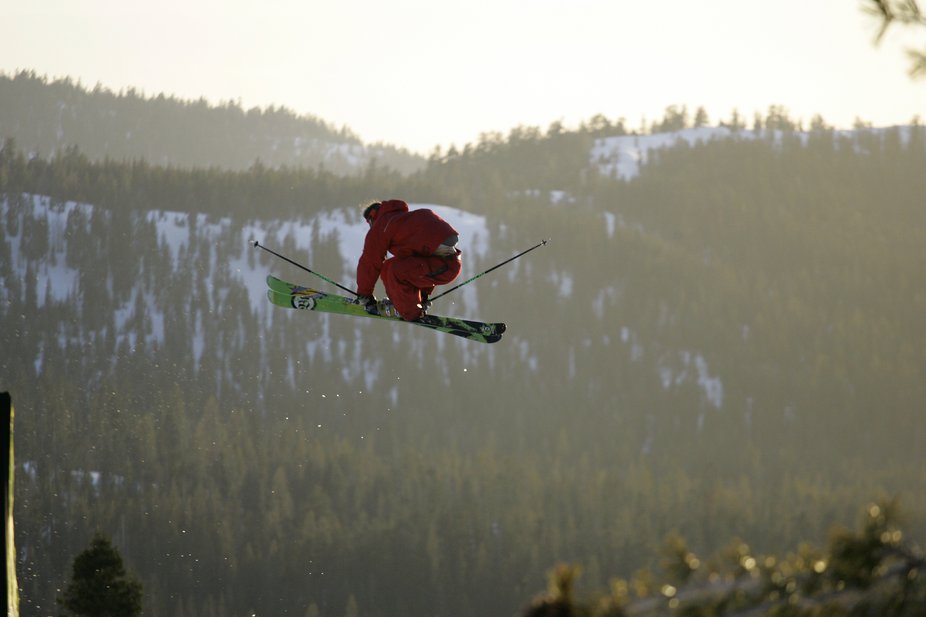
_
Their paths did (almost) cross in Le Chamois bar in Squaw: “I was so fan-boyed that I stared but I kept about 30ft at all times. I was petrified to speak to this guy! He’s like a physical god! There is nothing bigger than Shane. Candide, but Candide’s like this little French dude. Shane was like this mythical creature.”
I hesitate to bring it up, but I knew we’d have to broach the topic eventually. His accident. Roy had been living in Lake Tahoe for two years and been coaching for the Sugar Bowl Academy Freeride Team. So, what happened on the April 29th, 2006?
“I woke up in Mammoth that morning, it was the coaches retreat weekend. My contract with the mountain had ended the day before. This was kind of an end of the year wrap up. A bunch of the crew that were there were from ski racing and stuff. I didn’t think many people would want to be going to the terrain park.
Two weeks prior, I had been there with all the kids I was coaching, and I saw this jump that was so perfect. It was this 100ft step up.”
“The morning of my accident, things were a little different. I was on new skis, it was a little bit colder, it was early in the day and a few other factors. The biggest mistake was that I just hit a jump blind, that was something I never did. Still, I don’t know why? But you can’t rely on why, there is no way to ever get that why.”
“I remember, when I hit the jump, the second I hit I had gone so big. I told myself to close my eyes because I didn’t want to see the impact. I did, I closed my eyes. My body travelled 130ft and I came down from 30ft in the air. The resulting impact, with the snow, burst-fractured my T12 vertebrae right into my spine and instantaneously caused paralysis, from the belly button down. No motor, no feeling, no anything. The idea of what had just happened was even at a higher magnitude because I had cut my thumb and I was bleeding everywhere, I couldn’t quite understand what had happened.”
He called the head coach, told him what happened and then he blacked out:
“Next thing I knew, Ski Patrol was there with an air mask on my face. I felt like my body got sucked back in.
It was the start of the second chapter of a life that you’re only supposed to get one chapter in.”

Broken back, but still smiling
_
His injury is T12 incomplete spinal cord injury. Roy had a long road of recovery ahead and there was obviously an enormous financial burden in front of him.
“The ski team that I was working for, The Sugar Bowl Ski Team, they created what was called Roy’s Recovery Fund. A guy called Bill Hudson, he actually sits on my board of directors, to this day. He was the executive director of Sugar Bowl Ski Team at the time. He’s sat on my board for 11 years and he’s been an integral part of my life for 14 years. The idea of the foundation came from the families of the Sugar Bowl Ski Team and then his hometown of Waistfield, Vermont. “They raised all this money for me and put it in this umbrella fund at Sugar Bowl. For two years, I had the opportunity to not have any fiscal worries. I wasn’t living a frivolous life, but I could focus on recovery every day 6-8 hours a day. That was made possible because of that fund.”
From that, he knew that he had to pay it forward.
“I had to create something that would create the same opportunities for those that had fallen into the same shoes that I did. Pursuing a dream in outdoor sports or having an injury and wanting to get back to the outdoors. How could we make that possible? All these people made it possible for me, well I wanted to make it possible for everybody else.”
So, he had the cause and the funds, now he just needed a name…
“I actually wanted to call it Flip-Back, because I wished that if I had done a backflip. When I got hurt, I was just doing a straight air, like a little shifty and then I realised it was too big. I came to the realisation: ‘close your eyes and wait for the impact. I had wished I had done a backflip and now I knew I probably wouldn’t ever do a backflip. So I wanted to ‘flip back’, so that was the initial thought.”
“Then it really hit me, I didn’t want to flip back, I wanted to move forward. I wanted to extend positivity and find gratitude and find the opportunity to extend gratitude to others and I don’t think there’s a better way to do that than a high five. That name, that idea, that gesture came the morning after surgery. The surgeon, David Leppla came into my room and he gave me a brief of what had gone down and lo and behold, I didn’t know what to do other than put my hand up, like ‘thanks man’. He stared at my hand for what felt like 15 minutes, was probably only a few seconds, but years later when the idea of this non-profit. The first thing we ever did was a ski event in 2008. The name came from that, that lack of knowledge from the doctor’s side of things, not knowing what to do with a high five.”

_
Roy first discussed the idea of a foundation with freeski superstar CR Johnson.
“I actually met CR through my physiotherapy. CR had his first brain injury in December 2005. I had my spinal injury in April ’06. I had heard through the grapevine, about the physiotherapist that CR was working with and the amazing results that CR was getting. A guy by the name of Ladd Williams. Ladd is a doctor of physiotherapy, but he’s also a native American. He uses a combination of actual physical therapy, but also with some healing powers of his beliefs and who he is. I’ll tell you what, there’s something there. I can’t explain it, but it’s there. When I met CR, he and I were both doing six to eight hours of intense work, four days a week with Ladd.”
They hated having to keep going back to the hospital for two reasons:
“1. The smell of a hospital is disgusting.
2. You never feel as if you’re progressing if you’re constantly going back to the place where you were first healing.
We always said that we need to create this space that had all the different modalities of healing, that would encompass a healing atmosphere inside of one building, without the smell, the feel and any resemblance of a hospital.
We did that and when CR passed away in March of 2010, he had a lot of great sponsors who put together a lot of memorial projects and raised funds”
That ended up resulting in The CR Johnson Healing Centre, a 4,000sqft facility, the home of High Fives, in Truckee, California. High Fives employs a full-time trainer, a full-time physical therapist, two full-time acupuncturists and one full-time massage therapist.
Roy’s original ambition for the foundation was to have one person a year and replicate what people did for him. Find somebody that got hurt in a ski or snowboard accident and provide them with the financial support and make sure they had everything they need to get through the recovery process. Just one person.
“The first year we did that and after that, all of a sudden we had helped five people and then 13 people. Now, 11 years into the organization, we’ve helped 357 individuals and veterans, from 40 states in Canada and North America.”
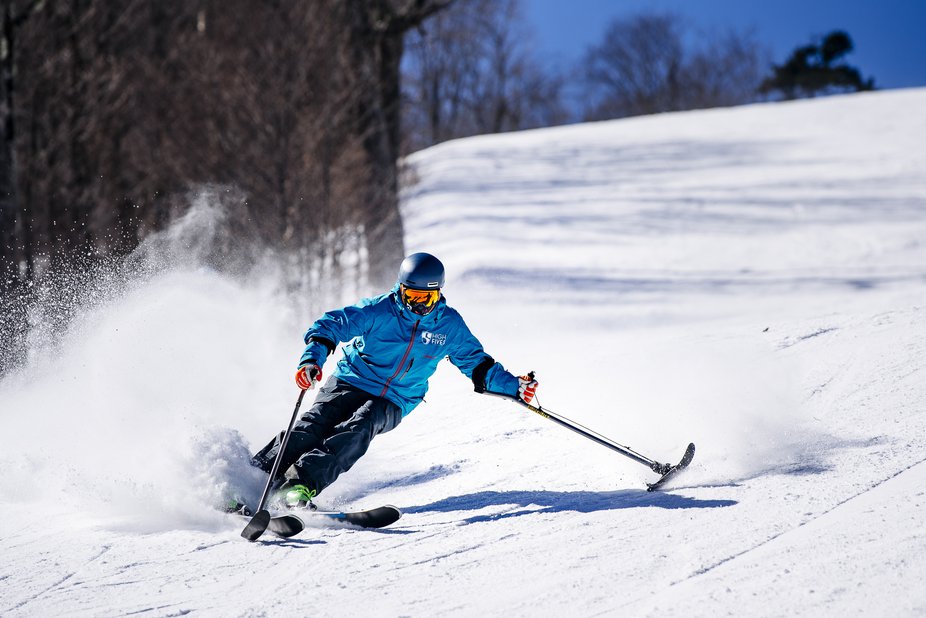
_
“I’d figured that by now we would have helped 11 people. The whole goal was one person a year, in the ski & snowboard world. It’s now evolved into the mountain sports world and folks that have just gotten hurt, in a car accident, serving our country or another way and providing them with the opportunities to get back outdoors.”
He knows how important it is for you to get outside and experience physical feats that the mind tells you are not possible, but your inner drive gives you the ability to overcome the mind.
High Fives has grown way bigger than Roy could have imagined in that hospital bed. He runs through some of the foundation’s impressive achievements:
“Until the dissolvement of Powder Magazine, we were the Non-profit organization of the year, for 10 consecutive years. We had our logo on the back of Joey Logano’s NASCAR Championship winning helmet. That helmet now sits in the White House. My face has been put on a Lays Potato Chip bag, because of the smiles that I have provided to the community.”
Roy even met his wife — Summer and Winter Paralympic Gold Medalist— Alana Nichols through High Fives:
“I probably wouldn’t have met her if I didn’t start High Fives, we’ve got this little boy named Gunnar and he’s everything you could ask for in a son. There are many things that you can look back on, but I think the one thing that’s so important is the fact that when I got hurt there was nothing, there wasn’t a community, there wasn’t an, as we call it; an Ohana. There wasn’t anyone that I could call for help. It was navigating without a compass. “
That’s probably been High Fives greatest achievement:
“I think, at the end of the day, what we’ve done, is given a voice to a community that was pretty much lost and under-served. I think that’s what’s so important. It’s so hard, at a young age, to have a debilitating injury, that completely transforms every aspect of not only your life but your family, your friends, your community. If you have someone that’s there to help you through the process, or a larger group than just yourself, it’s unstoppable.”
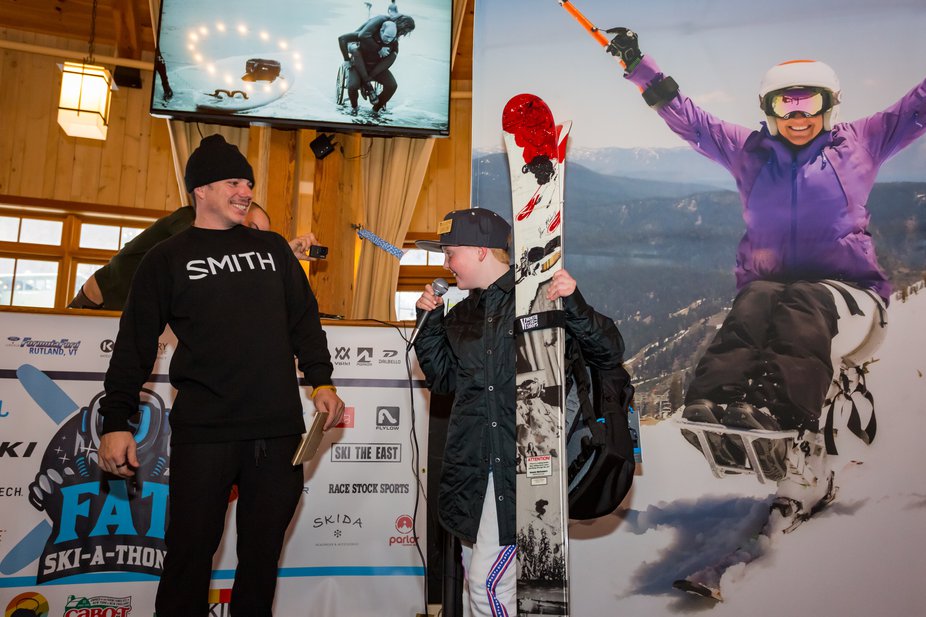
_
The pandemic has unsurprisingly interrupted the foundation’s plans. They’re operating on a no new/continue the mission approach.
“We had plans to open a facility on the east coast, we had big plans to combine forces with another foundation out in Texas, called Adaptive Training Foundation, who we’re very close, near and dear with. I think right now for us, is honing in on what we’ve created and improved it to a point where they almost become seamlessly running themselves. I think that’s where we’re at, continuing the mission and refining our purpose, but big plans? We’ve got them, but unfortunately, they’re on hold.”
“The cool thing for us is that we’ve empowered a lot of individuals, so a lot of the times, the things that we see, aren’t really the things that we can plan for. I mean, Trevor Kennison, who would have known that buying him a sit-ski and investing in him, would lead to him being as big or bigger than a lot of able-bodied athletes in the world? Who would have thought that answering an email about a guy who got hurt on a snowmobile would lead to getting him to the South Pole, on a sit-ski, on the 100-year anniversary of South Pole exploration? A lot of the big plans that I think for-profit companies can plan for is because they can project how their product is going to work in the environment that they’re designing for inclusion.”
“For us, we believe in people and I think when you believe in people, the human spirit is the goal and that’s really up to that person to define what that plan will look like. We’ve been super blessed with both the individuals that we’ve supported and the things that they have achieved. One of my favourite instances was a young girl who got hurt in an ATV accident. Her boyfriend was a really great skier, she was never much of a skier, but she always loved going skiing with him and it was just this great symbiotic relationship. Getting them to go skiing together again –she just took a lesson that we covered the cost for, and we paid for all her physical fitness up to it, so that she was strong because a sit-ski adds 42 pounds. You’ve got to be strong to keep yourself off the ground—giving that gift, of going skiing, is just as impactful for my soul, purpose and ethos as it is to Trevor becoming famous off of Corbet’s or Grant (Korgan) skiing to the South Pole, or Alana winning, they’re all the same because it’s what that individual is setting for their own goal.”

Roy making dreams come true! Him and Tanner wearing T-shirts to support me in my post-coma marathon in 2014
_
"When you have these life-changing injuries, you’re laying in that bed and there are many thoughts that life is over. I think that’s something that we’ve been able to do. We’ve been able to step back and give people that life and the community, to say ‘No. Life’s not over. Life’s just beginning again, and it will be awesome.”
He admits that skiing will never be what it was for him before the accident, he can ski (very well) using ‘outriggers’, poles with small skis on each end, to help his balance, initiate turns and stop. After his initial spinal cord injury in 06, in 2012 he snapped his femur, skiing:
“I rotated my leg around and had to have my whole right leg reconstructed. Skiing has led to two pretty life-changing, life-altering, life-f*cked up injuries and I continue to go back. But now I really would love to find a chairlift that goes up and back down and I’d just stay on it. I love talking to people on the chairlift.”
“Skiing now, I like to ski groomers that are groomed really nice and I can make turns. I’m petrified of catching air. My body is twice as strong on the left side as it is on the right, so even with the outriggers, I have to favour my left side so much. By the time I get skiing and get done, the amount of torque and sh*t on my body is just uuurgh. It hurts.
I still do it, because I want to ski and I want to show others.”
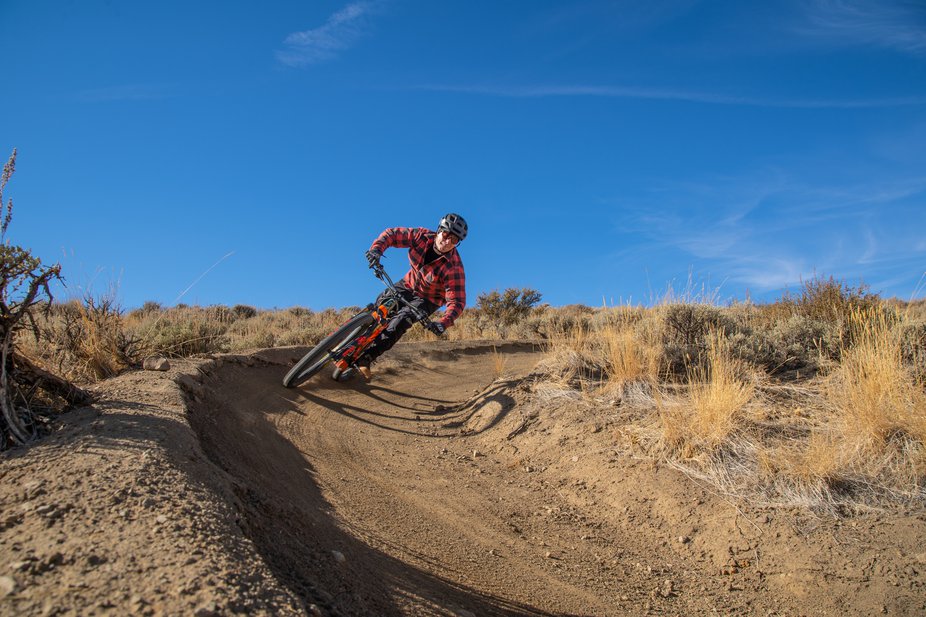
_
There is another sport that Roy is excited about is mountain biking.
“This whole E-Bike revolution, which is huge in Europe, but over here in America we’re like ‘Oh E-Bike is lazy’ but no, there’s so much purpose to them. I’m glad Europe loves them and I’m a big advocate of them, this summer I rode 1,500 miles on my bike. That to me is the only thing, post-injury, that has really felt as rewarding as something pre-injury, because of that electrical assist.”
“For now, I’m finding the line, the enjoyment, the air, the trails and the progression that I once found in skiing to be that release of endorphins and just stoke is found on the trails, on my mountain bike.”
Even if Roy never skis another day in his life, he’s given enough back to the sport in a way that no one could have ever imagined.
_
Roy’s Favourite:
Trip: I would love to go ski at the Hahnenkamm. To go to Austria and just be in the presence of what skiing is there.
Trick: My favourite trick before, was just really big backflips. I loved them. If I could do any trick now, there ain’t nothing hotter than that T Hall double-back off that urban round piece of art
Track: Right now Gunnar’s favourite song is ‘ Rockstar’ by Da baby about the Lamborghini cop car. Seriously, Gunnar’s in charge of the music now. The thing I’ve been listening to a sh*t ton now is Eminem, Shady X5 album that he released like 15 years into his career that’s just a collaboration of a bunch of songs and remixes.
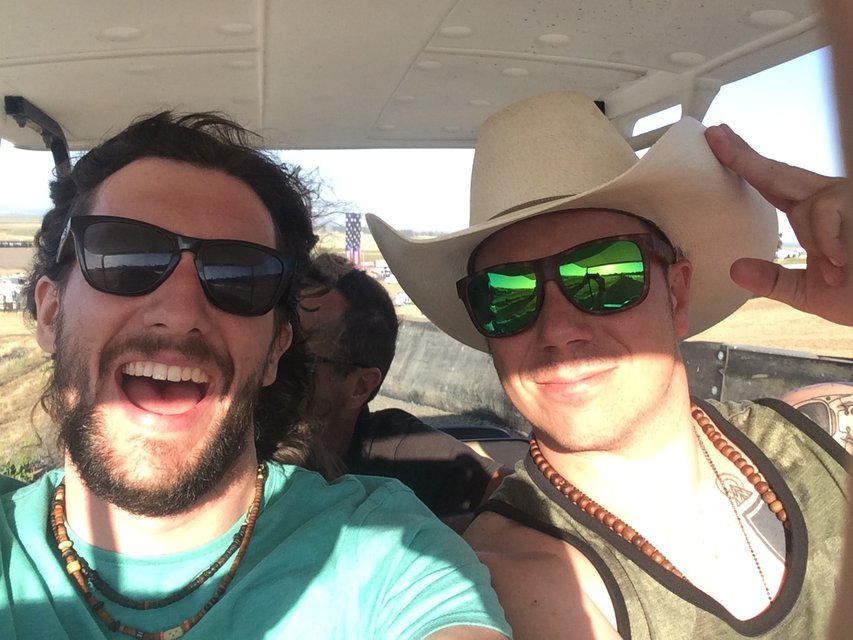

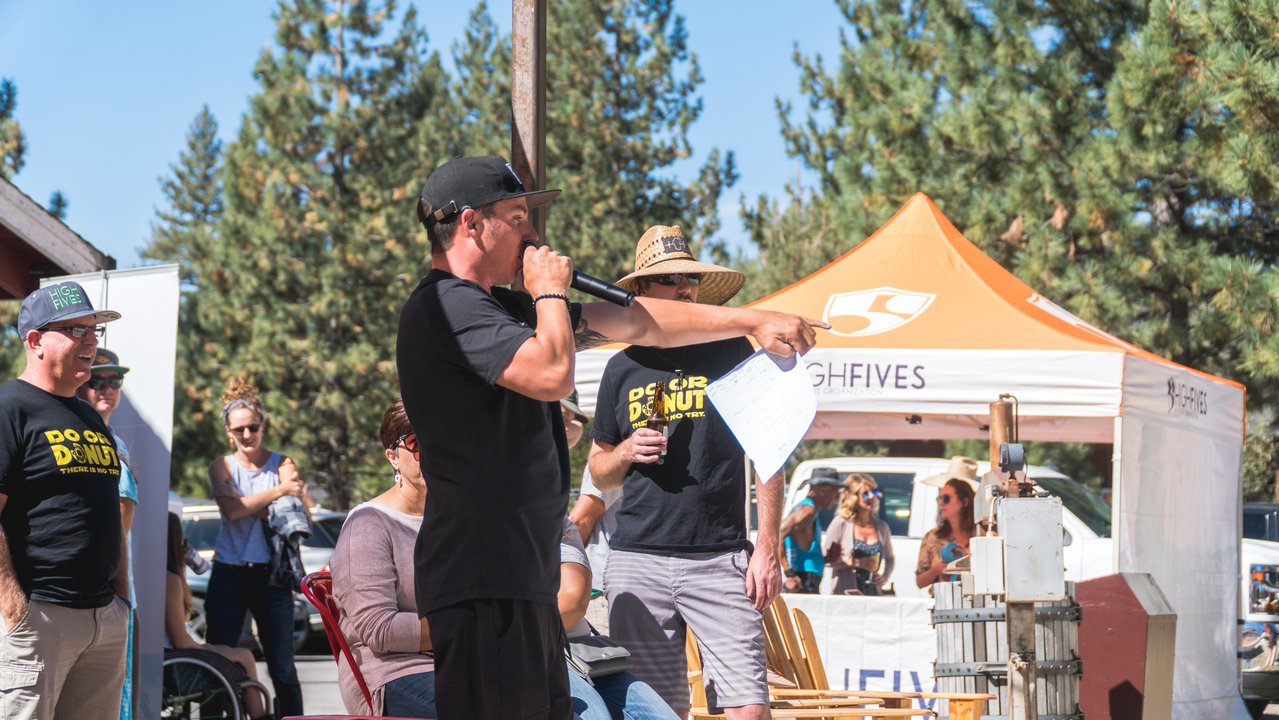
Comments